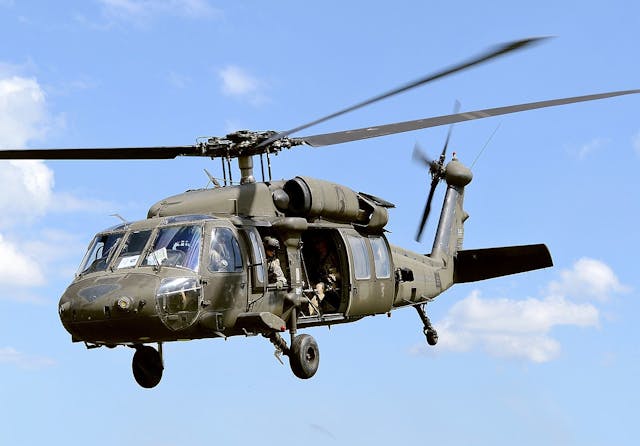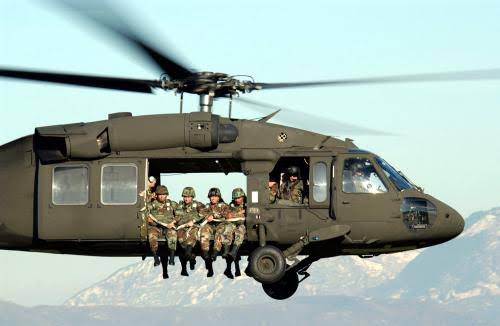UH 60 Helicopter: Advanced Avionics and Battle Systems
UH 60 Helicopter: Advanced Avionics and Battle Systems
Blog Article
Exploring the Ingenious Modern Technology Behind Aircraft Style and Design
The field of aircraft style and design is witnessing a transformative change driven by ingenious technologies that improve sustainability, performance, and efficiency. Advanced products such as carbon fiber composites and titanium alloys are setting brand-new requirements, while wind resistant innovations and expert system are simplifying procedures and boosting end results. As the sector comes to grips with the challenges of ecological responsibility, growths in sustainable aviation technologies guarantee to improve the future. The implications of these improvements prolong past efficiency metrics; they might redefine the very nature of air traveling. What might this indicate for the market all at once?
Advanced Materials in Aircraft Layout
Just how can the assimilation of innovative materials change aircraft layout? The incorporation of innovative materials, such as carbon fiber compounds, titanium alloys, and progressed ceramics, plays a critical function in boosting aircraft performance and effectiveness.
In addition, sophisticated materials display enhanced resistance to corrosion and exhaustion, resulting in lower upkeep expenses and extensive life span. The usage of titanium in essential parts assists hold up against extreme temperatures and tensions, while carbon fiber compounds supply flexibility in layout and production processes. This flexibility enables more aerodynamic shapes, contributing to remarkable efficiency features.
Additionally, the combination of smart products, which can change homes in response to external stimuli, opens up new avenues for flexible systems in aircraft style. uh 60. These developments assure not only to boost safety and security and functional performance yet additionally to add to sustainability initiatives by reducing ecological impact via decreased exhausts. In summary, progressed materials are redefining the landscape of aircraft design, leading the way for more efficient, long lasting, and eco-friendly aeronautics solutions
Wind Resistant Advancements for Effectiveness
Wind resistant innovations play an essential duty in boosting airplane effectiveness, considerably affecting fuel consumption and general performance. Breakthroughs in airfoil layout, such as the introduction of supercritical wings, permit maximized lift-to-drag ratios, decreasing drag at transonic rates. These technologies allow aircraft to keep greater rates with reduced fuel expenditure, directly affecting functional costs and environmental sustainability.
In addition, the combination of winglets has confirmed reliable in mitigating vortex-induced drag at the suggestions of wings, additionally boosting gas performance - uh 60. This style alteration causes a reduction in wake disturbance, adding to improved aerodynamic performance during cruise conditions

Additionally, computational fluid characteristics (CFD) devices have actually transformed the testing and refinement of wind resistant shapes, permitting accurate simulations of air flow around airplane (uh 60). This enables designers to innovate constantly, making sure that modern-day aircraft not just fulfill regulatory requirements however also press the borders of efficiency in aviation

Role of Computer System Simulations
Computer simulations have ended up being an indispensable tool in the area of aircraft style, enabling engineers to perform comprehensive evaluations and optimizations of various style aspects. These simulations permit for the online testing of wind resistant buildings, architectural stability, and efficiency metrics long before physical models are constructed. By employing computational fluid characteristics (CFD) and finite component analysis (FEA), engineers can predict just how air streams around the airplane and exactly how different materials will certainly respond to stress and stress.
Furthermore, computer system simulations help with the exploration of a vast array of variables and situations, accelerating the style procedure and decreasing prices associated with physical testing. This ability not just enhances the accuracy of forecasts concerning aircraft habits however additionally offers insights right into possible design enhancements that could not be quickly apparent via standard methods.

Furthermore, simulations assist make sure compliance with strict safety policies by enabling designers to recognize and remedy prospective problems early in the design stage. The assimilation of simulation technologies into the aircraft design process emphasizes the substantial improvements in engineering practices, eventually adding to the advancement of much safer, much more efficient, and environmentally pleasant airplane.
Expert System in Design
Artificial knowledge (AI) is transforming the design landscape, particularly in aircraft style, by enhancing and boosting decision-making procedures design operations. Via device knowing algorithms, AI can assess substantial datasets, uncovering patterns and insights that notify layout selections and boost total efficiency.
AI applications in aircraft layout include generative style, where formulas create several style choices based upon defined criteria, permitting designers to examine a broader variety of opportunities. This not only accelerates the design phase but also guarantees that the final products meet rigid performance and safety criteria.
Moreover, AI-driven predictive analytics promote upkeep scheduling by assessing historic data and predicting prospective failings. This aggressive strategy reduces downtime and enhances airplane integrity.
In addition, AI help in simulation and modeling, making it possible for engineers to test designs under various conditions without the requirement for physical prototypes. This ability shortens advancement timelines and reduces expenses go to this web-site associated with traditional screening approaches.
Lasting Aeronautics Technologies
The answer exists in the adoption of lasting aeronautics technologies that prioritize efficiency and reduce carbon emissions. Innovations such as sustainable aviation fuels (SAFs), which are acquired from sustainable sources, have actually emerged as an essential element in achieving lower lifecycle exhausts.
In addition, innovations in airplane style, such as the advancement of lighter materials and more aerodynamically effective shapes, contribute to enhanced gas effectiveness. Electric and hybrid propulsion systems are also getting traction, using a pathway to decrease dependence on nonrenewable fuel sources and lessen greenhouse gas exhausts.
The integration of these modern technologies is sustained by regulatory frameworks and industry cooperations intended at establishing enthusiastic sustainability targets. Furthermore, electronic devices like information analytics and expert system can enhance flight procedures, page further improving gas effectiveness. By embracing sustainable methods and modern technologies, the aviation market can not just satisfy the expanding need for flight but also play a critical function in attending to environment change, making sure an extra lasting future for air transport.
Final Thought
The convergence of advanced materials, aerodynamic technologies, and advanced innovations marks a substantial advancement in aircraft design and design. The combination of carbon fiber composites, titanium alloys, and AI-driven procedures not only enhances efficiency and performance however also simplifies process and predictive upkeep.

Computer simulations have come to be an essential tool in the area of airplane layout, enabling engineers to conduct comprehensive evaluations and optimizations of numerous layout facets.The merging of advanced materials, aerodynamic innovations, and sophisticated innovations marks a considerable development in airplane style and design.
Report this page